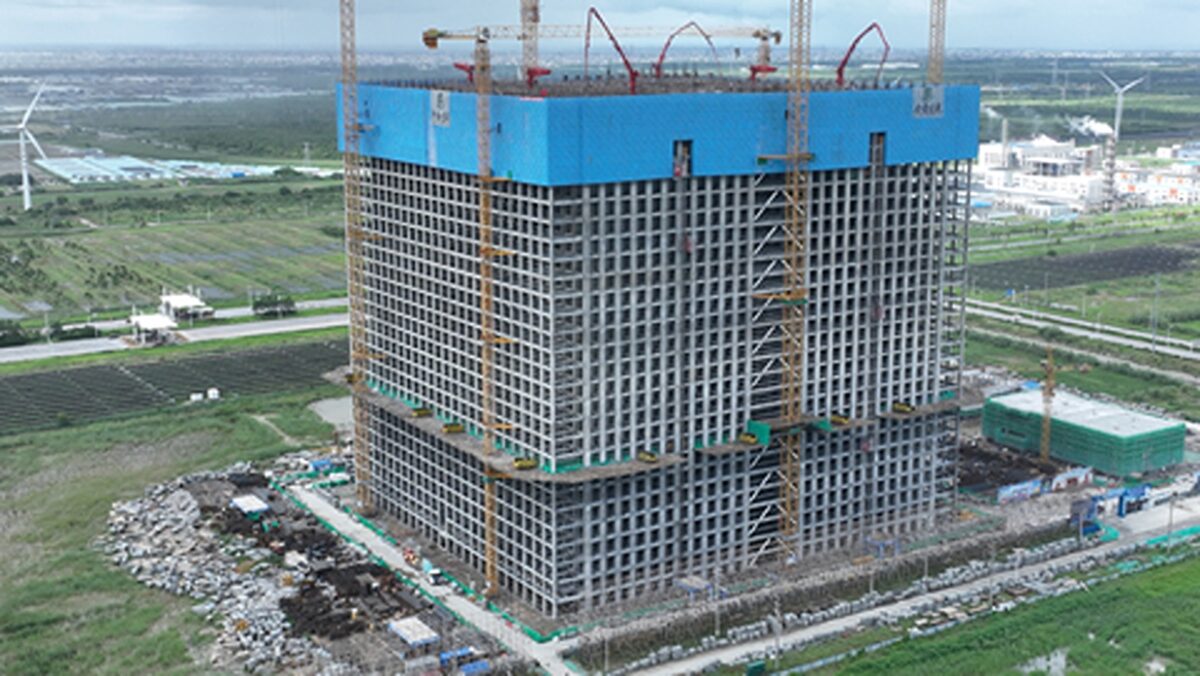Gravity storage system provider Energy Vault’s first commercial EVx GESS has been connected to the grid in China.
Earlier this week, the company confirmed that the 25 MW/100 MWh EVx system, located in Rudong, China's Jiangsu province, was connected in December 2023, enabling full commissioning by State Grid Corp. of China. The Rudong EVx project will be the world’s first commercial, utility-scale, non-pumped hydro gravity energy storage system once final provincial and state approvals are obtained for the start of commercial operations.
Work on the Rudong project began in 2022, when Energy Vault said it would build five storage projects in China using its EVx technology, with a combined storage capacity of 2 GWh. Commissioning began on the project, which is next to a wind power facility, in August 2023.
Energy Vault’s latest announcement coincides with reports of new EVx projects it is working on with its partners, CNTY and Atlas Renewable Energy. Construction began on a 17MW/68MWh EVx GESS deployment in China last year, alongside two previously announced projects in the country: a 50MW/200MWh EVx and a 25 MW/100 MWh EVx.
The update means CNTY and Atlas Renewable now have nine EVx GESS deployments underway in China, totalling 3.7 GWh.
Popular content
The EVx projects are being built adjacent to renewable energy generation and national grid interconnection sites. Energy Vault said that upon completion, the systems will support the balancing of China’s national energy grid through the storage and delivery of renewable energy.
The Rudong and Zhangye projects have been designated as new energy storage pilot demonstration projects by China’s National Energy Administration. Energy Vault said the recognition, which will see increased management oversight by provincial-level energy authorities, “emphasizes the indispensable role of gravity energy storage in the crucial mission of global decarbonization, in particular in China.”
China’s existing energy policies require renewable energy plants to integrate storage of 20% of their nameplate generation capacity with at least a two-to-four hour duration. Energy Vault says energy storage durations will increase over time as more renewable energy generation becomes a larger percentage of grid power.
In February, Energy Vault signed a 10-year agreement to deploy its energy storage tech across the 16 nations of the Southern African Development Community region. It also announced it had begun construction of largest green hydrogen long-duration energy storage project in the United States to date, in northern California.
This content is protected by copyright and may not be reused. If you want to cooperate with us and would like to reuse some of our content, please contact: editors@pv-magazine.com.


By submitting this form you agree to pv magazine using your data for the purposes of publishing your comment.
Your personal data will only be disclosed or otherwise transmitted to third parties for the purposes of spam filtering or if this is necessary for technical maintenance of the website. Any other transfer to third parties will not take place unless this is justified on the basis of applicable data protection regulations or if pv magazine is legally obliged to do so.
You may revoke this consent at any time with effect for the future, in which case your personal data will be deleted immediately. Otherwise, your data will be deleted if pv magazine has processed your request or the purpose of data storage is fulfilled.
Further information on data privacy can be found in our Data Protection Policy.